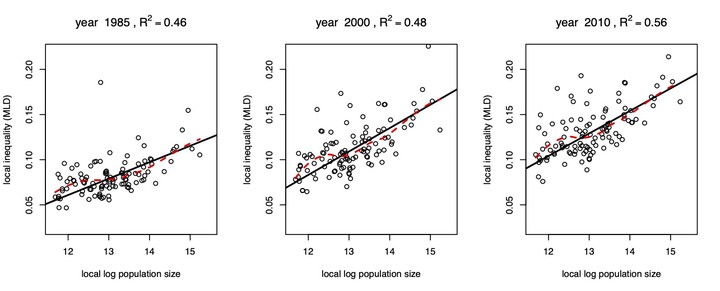 This figure documents a growing city-size inequality penalty.
This figure documents a growing city-size inequality penalty.
Abstract
Earnings inequality in Germany has increased dramatically. Measuring inequality locally at the level of cities annually since 1985, we find that behind this development is the rapidly worsening inequality in the largest cities, driven by increasing earnings polarisation. In the cross-section, local earnings inequality rises substantially in city size, and this city-size inequality penalty has increased steadily since 1985, reaching an elasticity of .2 in 2010. Inequality decompositions reveal that overall earnings inequality is almost fully explained by the within-locations component, which in turn is driven by the largest cities. The worsening inequality in the largest cities is amplified by their greater population weight. Examining the local earnings distributions directly reveals that this is due to increasing earnings polarisation that is strongest in the largest places. Both upper and lower distributional tails become heavier over time, and are the heaviest in the largest cities. We establish these results using a large and spatially representative administrative data set, and address the top-coding problem in these data using a parametric distribution approach that outperforms standard imputations.